Political, Religious, and Artistic Upheaval, 1530–1563
The Protestant Reformation was only one of many changes or “reformations” that took place in the 16th century, when Europe underwent a period of great political, religious, and artistic upheaval.
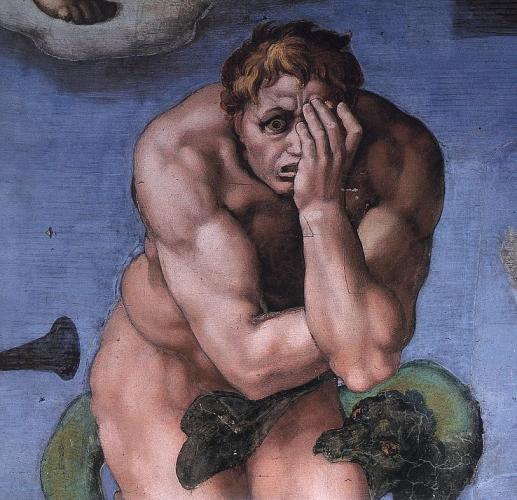
Florentines took advantage of Pope Clement VII’s imprisonment to overthrow Medici rule and establish the last Florentine Republic between 1527-1530. The Republic, in turn was overturned by Imperial troops after a bitter 10-month siege of the city.

In 1531 Alessandro de’ Medici became ruler of Florence.

Between 1534-37 a fortress was built in Florence to garrison Spanish troops, ensuring Medici rule.
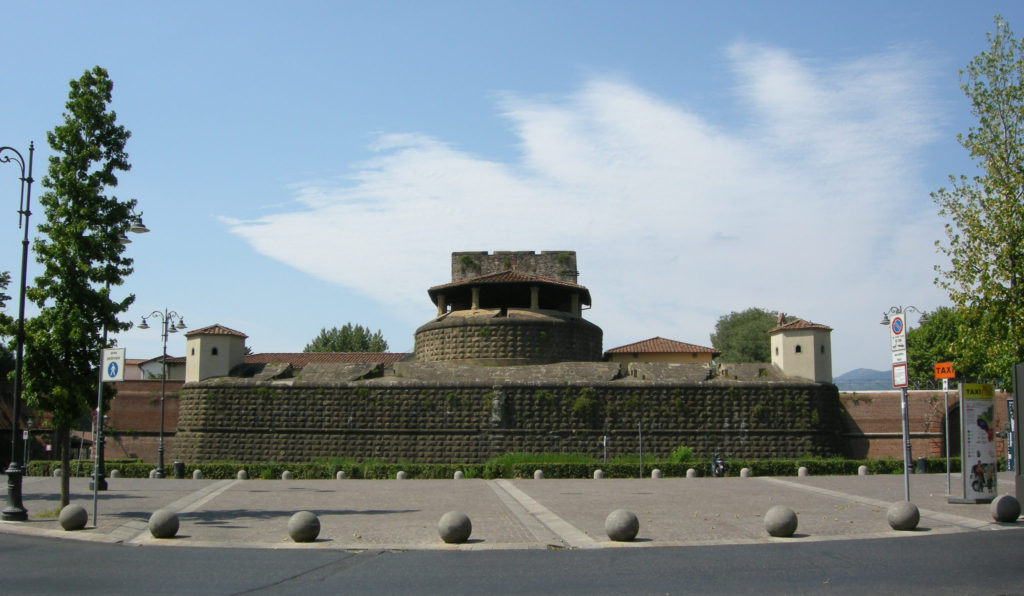
Nevertheless, in 1537 Duke Alessandro was murdered by his cousin Lorenzino and another young Medici descendant was selected to succeed him as duke.

The seventeen-year-old Cosimo, with help from his mother Maria Salviati, ruled Florence with an iron fist.

In the summer of 1537 Cosimo’s troops, with support from Emperor Charles V, crushed Florentine rebels at the Battle of Montemurlo.
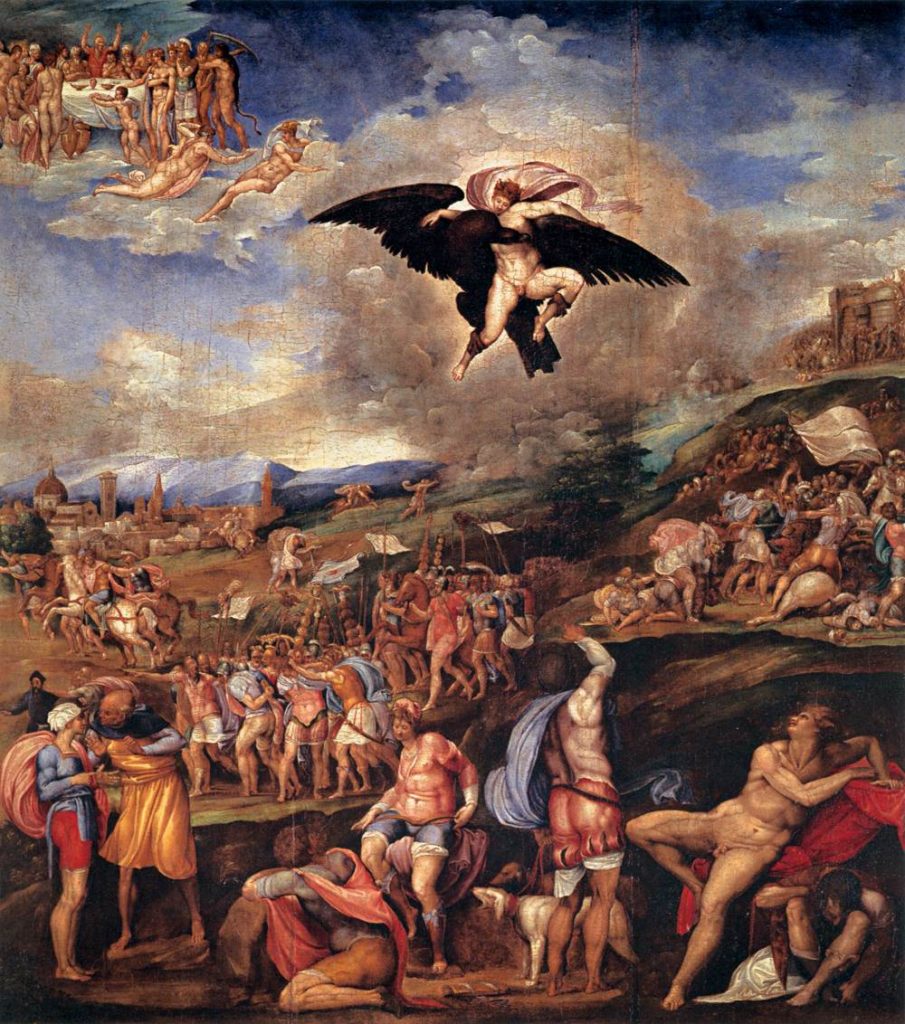
In 1539 Charles V arranged the marriage of Cosimo to Eleonora di Toledo, daughter of the Spanish viceroy of Naples.

With Spain’s military strength and his wife’s riches, Cosimo’s domination of Florence was assured.
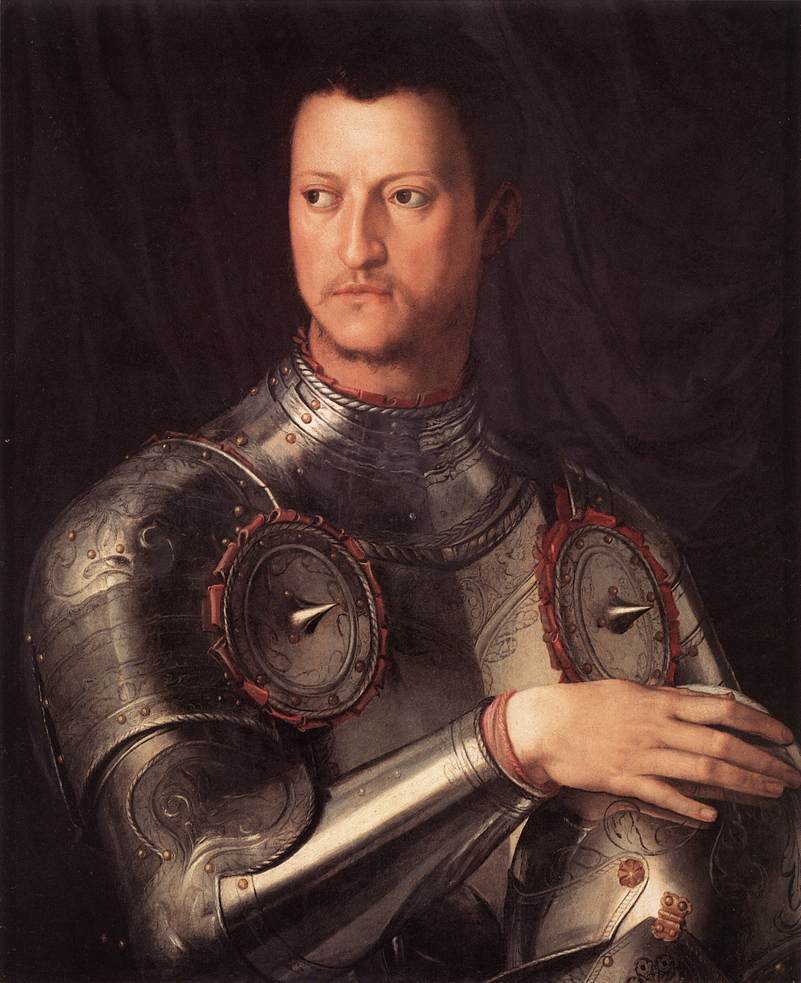
Michelangelo had been present in Florence during the siege, assisting in the city’s defense by building fortifications and he was forced to go into hiding when the Republic fell. He returned to Florence in 1531 to continue work on the Medici Chapel at San Lorenzo. He sculpted tombs for two Medici dukes with four allegorical figures that are masterpieces of grace and elegance.
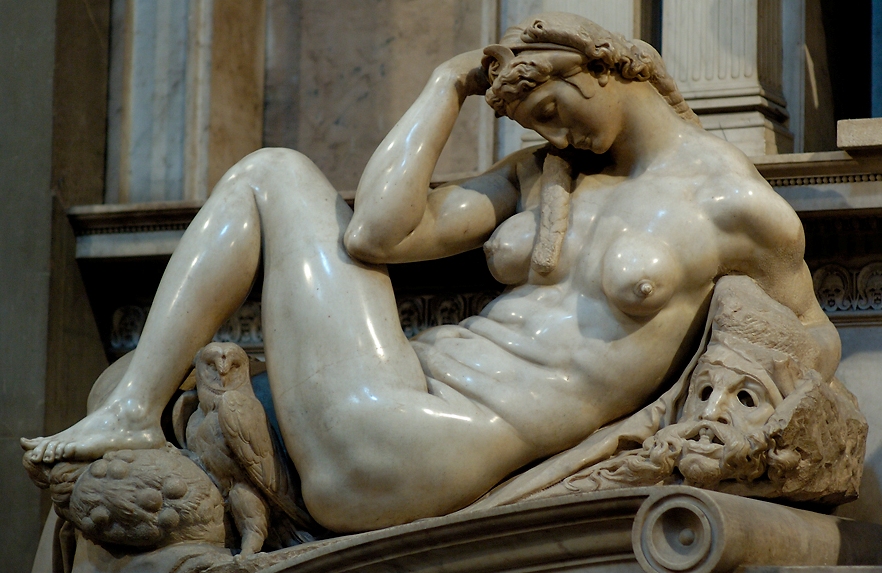
A generation of young artists, inspired by Michelangelo’s daring innovations challenged themselves to experiment in new artistic styles. This group of artists came to be known as mannerists, from the word maniera or “style.”
They played with ideas of perspective…
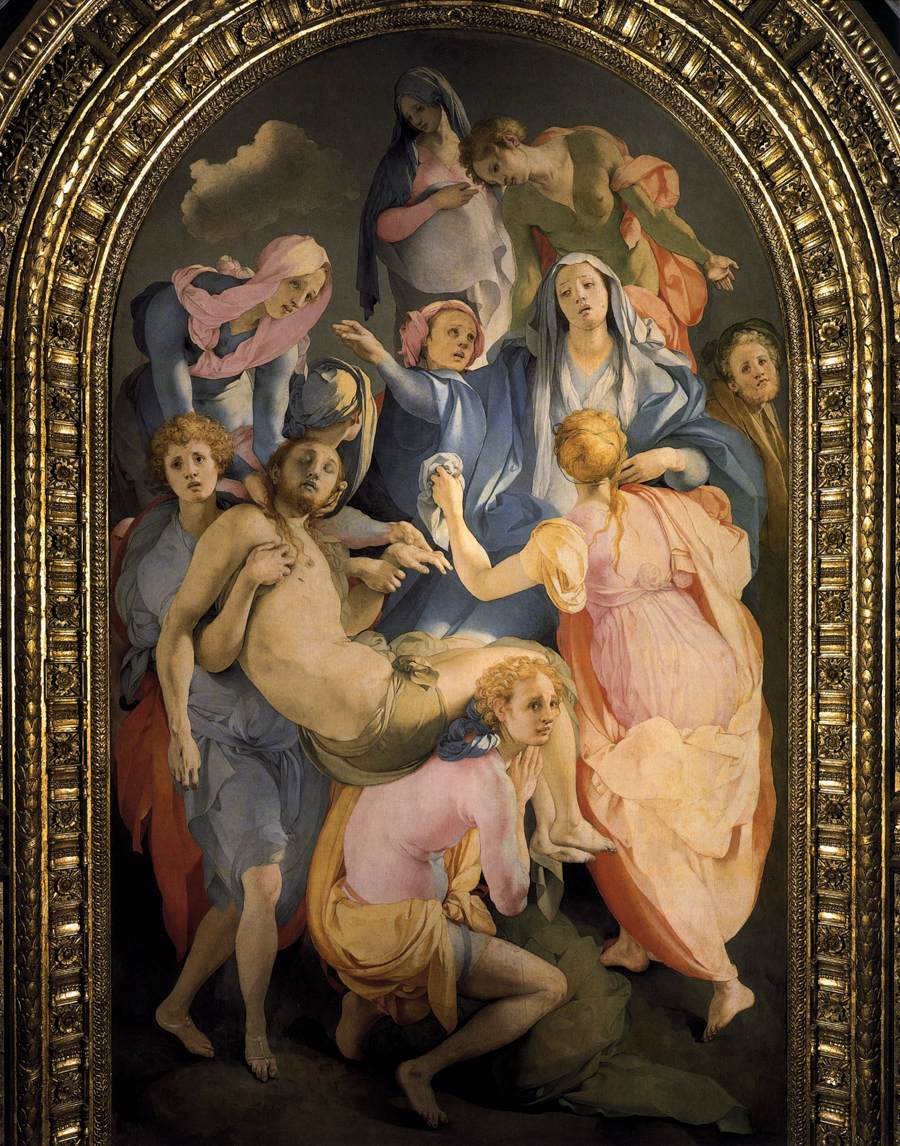
Jacopo Pontormo, Entombment
…exaggerated proportions of the human body…
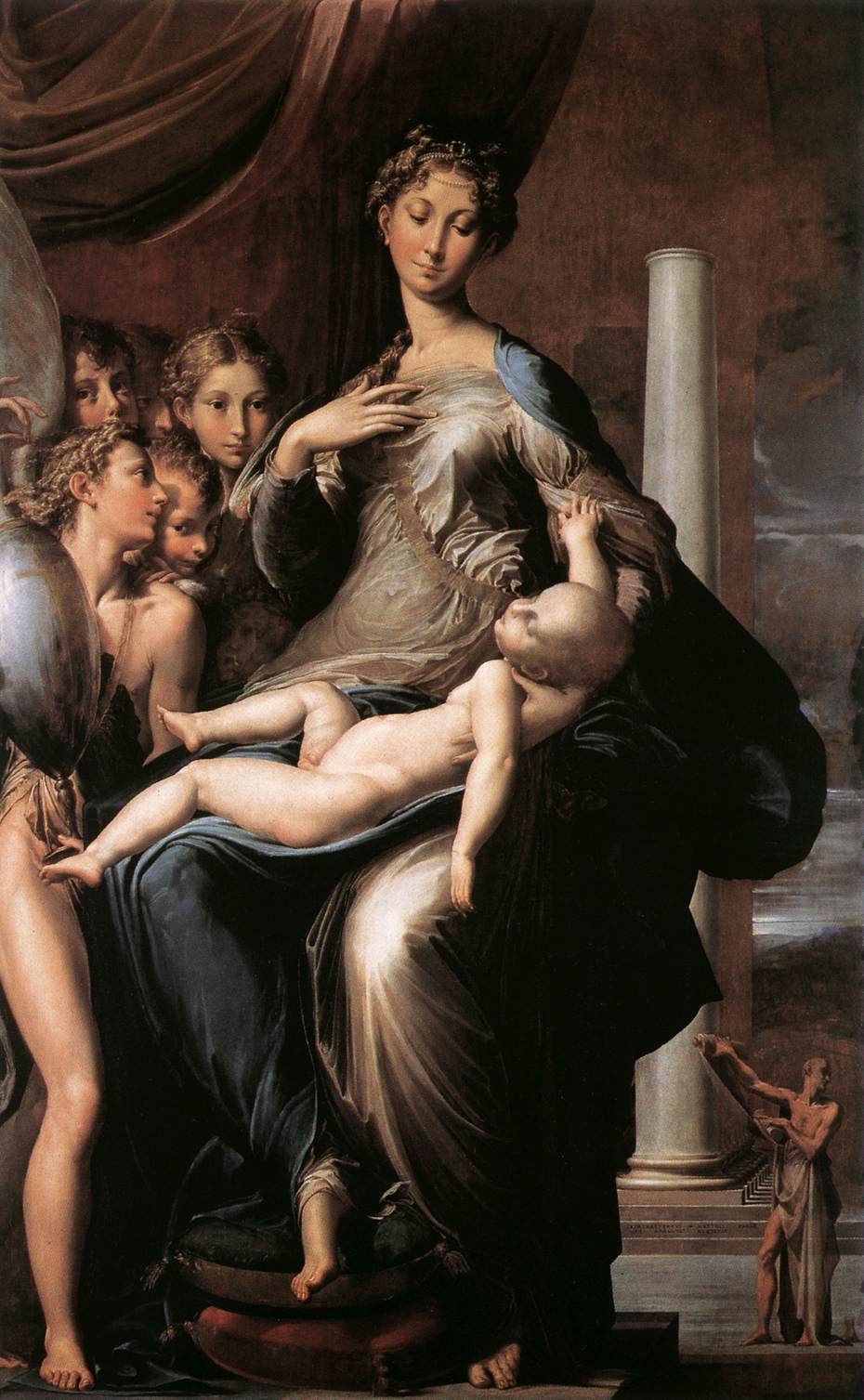
Parmigianino, Madonna of the Long Neck
…and experimented with color.
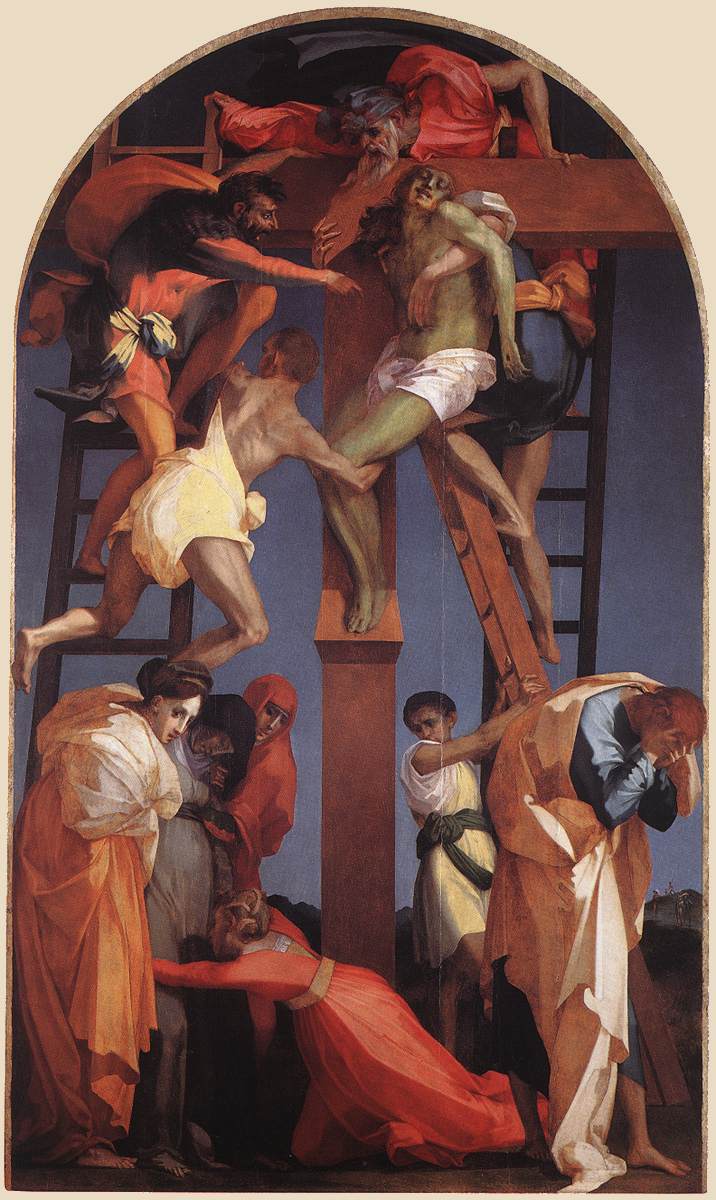
Rosso Fiorentino, Deposition
In 1534 Michelangelo left for Rome, where he lived for the rest of his life.

Jacopino del Conte, Michelangelo
Already recognized as the greatest living artist of his time, after painting the Last Judgment on the wall of the Sistine Chapel in 1541, Michelangelo found himself at the center of a controversy caused by the daring images he had painted there.
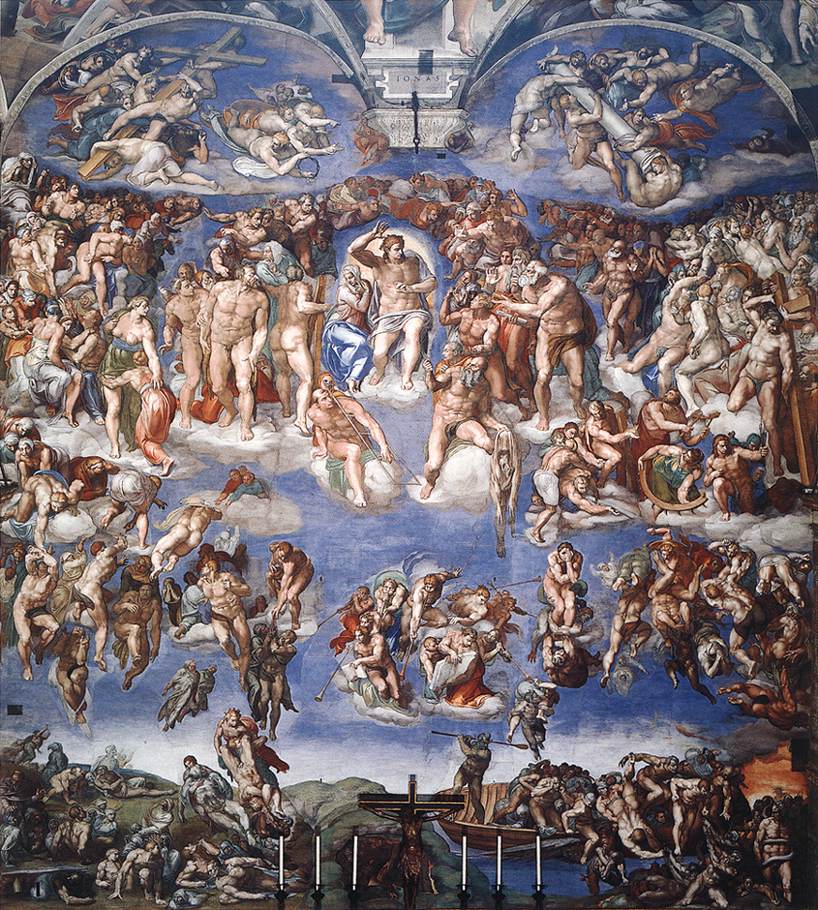
Michelangelo, Last Judgment
Painted on the wall of the chapel where the Pope said Mass before the most influential representatives of the Catholic church, these images drew enormous attention.
Here is interactive site with a 360° zoomable view of the Sistine Chapel with Michelangelo’s Last Judgment as it looks today:
http://www.vatican.va/various/cappelle/sistina_vr/index.html
It is at once an intensely personal vision of the final day when humanity is to be judged…
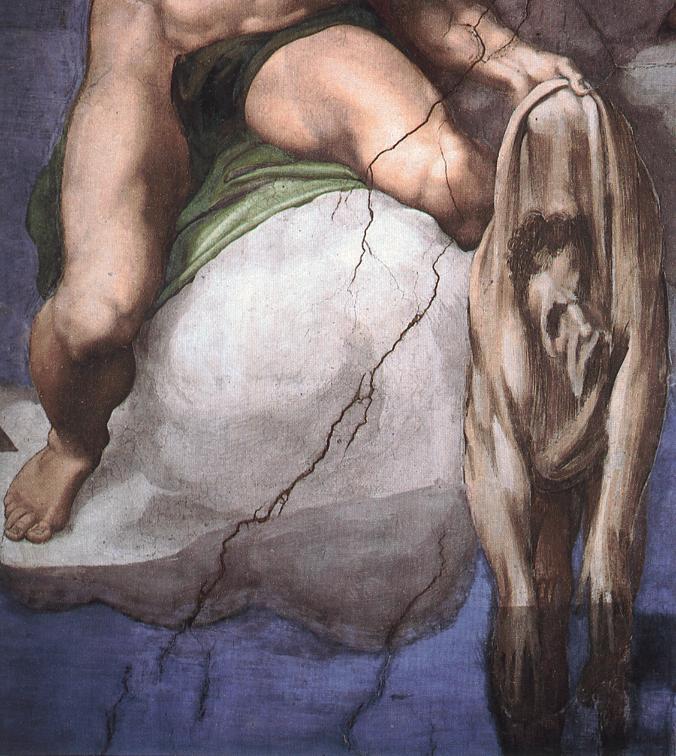
Michelangelo’s self portrait on the flayed skin of St. Bartholomew
…and an affirmation of the power of the Renaissance papacy represented by the vigorous, muscular body of Christ at the center.
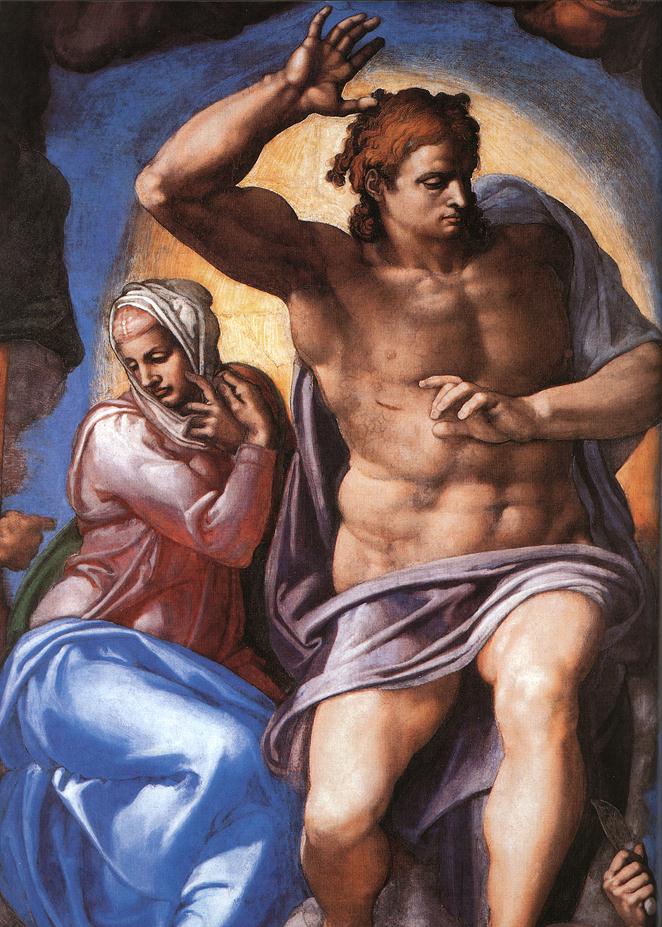
Detail of Christ and the Virgin Mary
Times had changed since Michelangelo had begun the work and the Catholic Church was now deeply involved in the reforms of the Council of Trent.
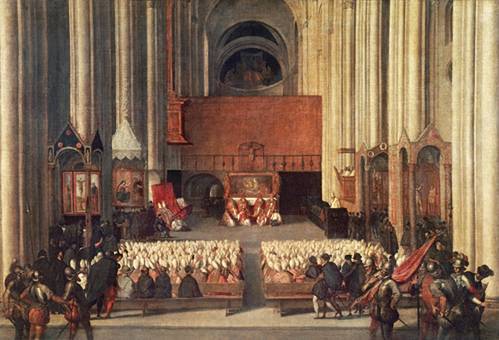
Many church officials felt that Michelangelo’s nude figures in the Last Judgment were obscene and decided they should be censored. The painter Daniele da Volterra has been immortalized with his nickname “Il Braghettone” (the big underpants painter).
Below is a detail of the figures of St. Catherine of Alexandria, St. Blaise and St. Sebastian showing one of the most violent interventions:
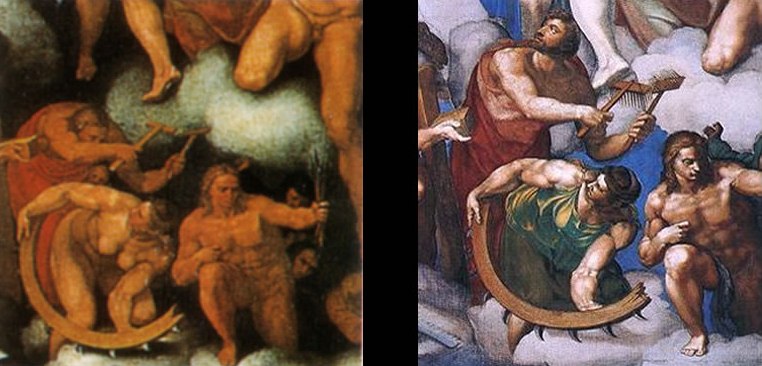
On the left is a copy made in 1549 before alterations, on the right Daniele da Volterra’s changes
Below is a diagram of all the loincloths that were painted over Michelangelo’s original fresco. The ones in red were painted in a secco (dry) over the old plaster, while the portion in blue (St. Catherine’s dress and St. Blaise) was created by gouging out the original plaster and painting a new fresco there.
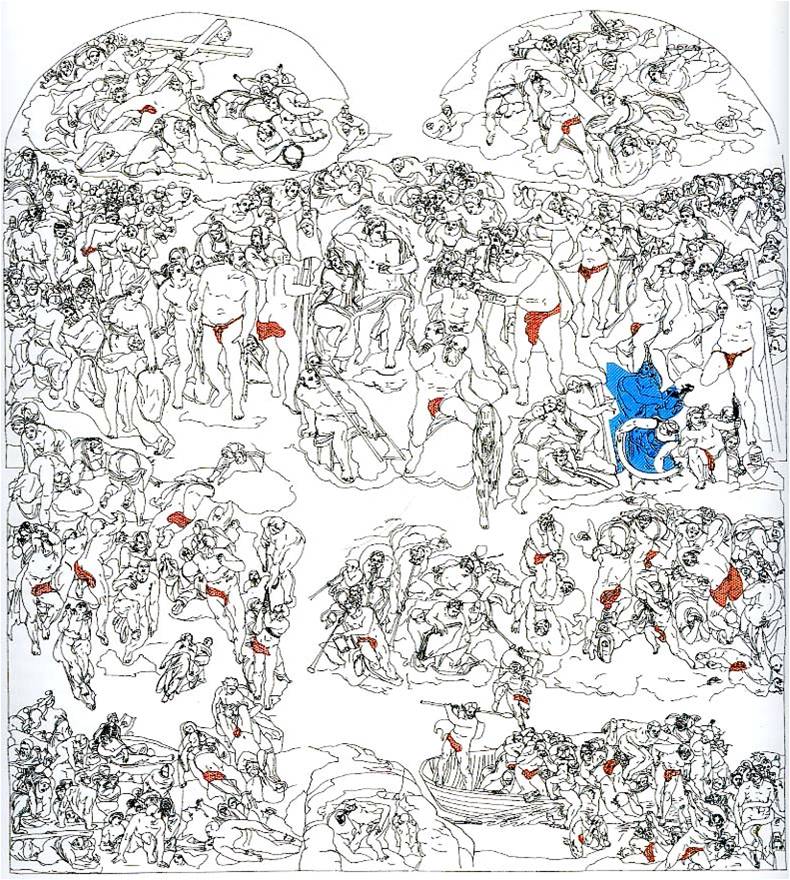
Not all of these were painted by Daniele da Volterra. Most were painted later. When the restoration was done in 1993 about half of the loincloths were removed, including the one on the opening figure of this chapter.
Now many more of the figures appear as Michelangelo intended them.
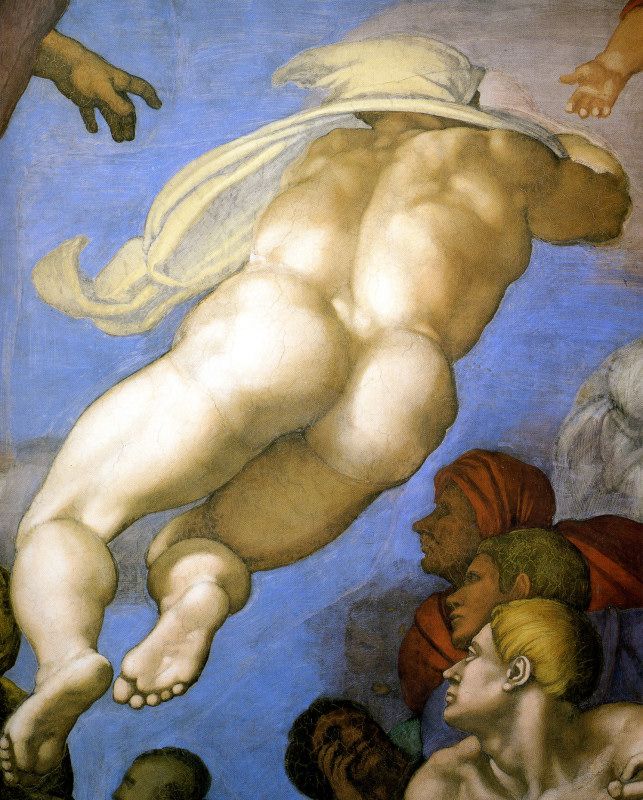
Michelangelo’s last years were dedicated above all to architectural works.
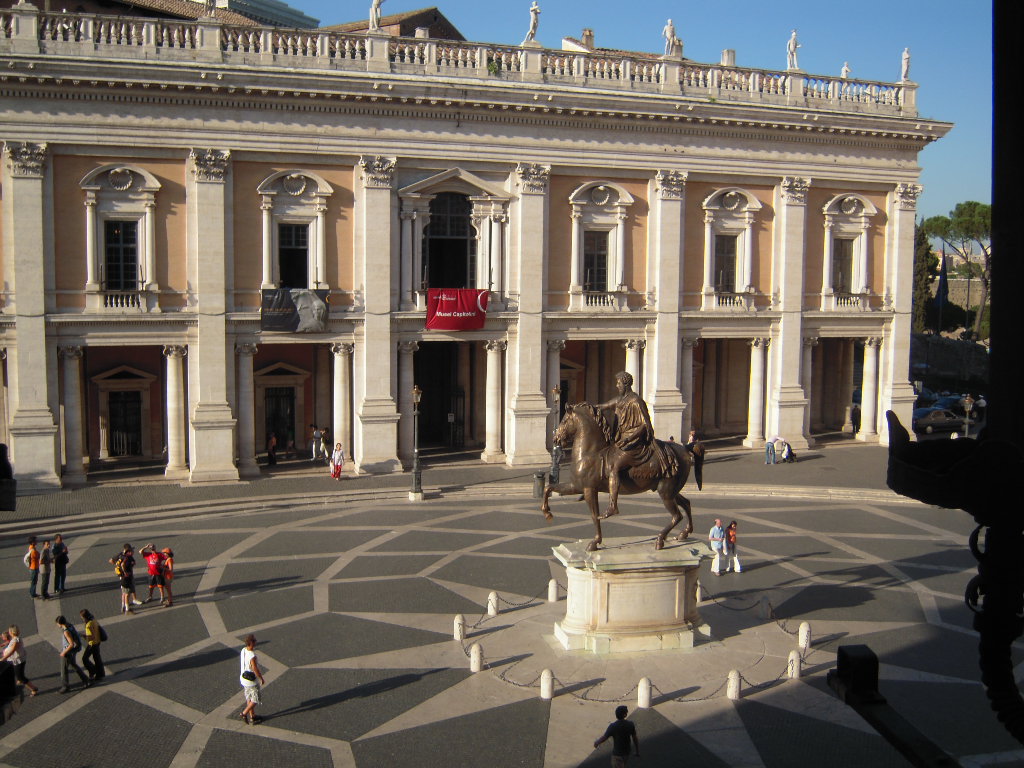
Piazza del Campidoglio, Rome
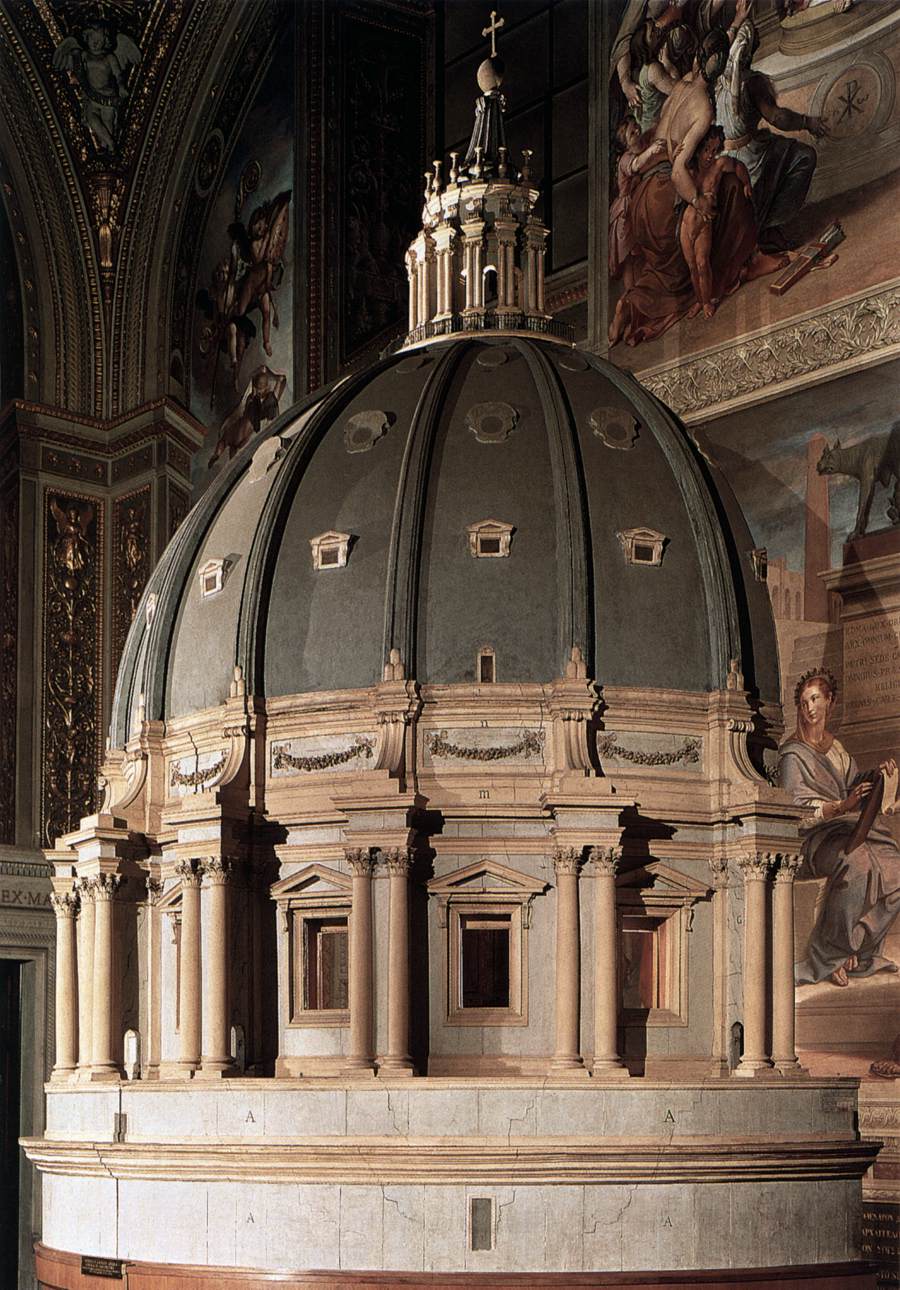
Model for Dome of St. Peter’s, 1560
Michelangelo’s earlier architectural work in Florence also influenced young architects there…
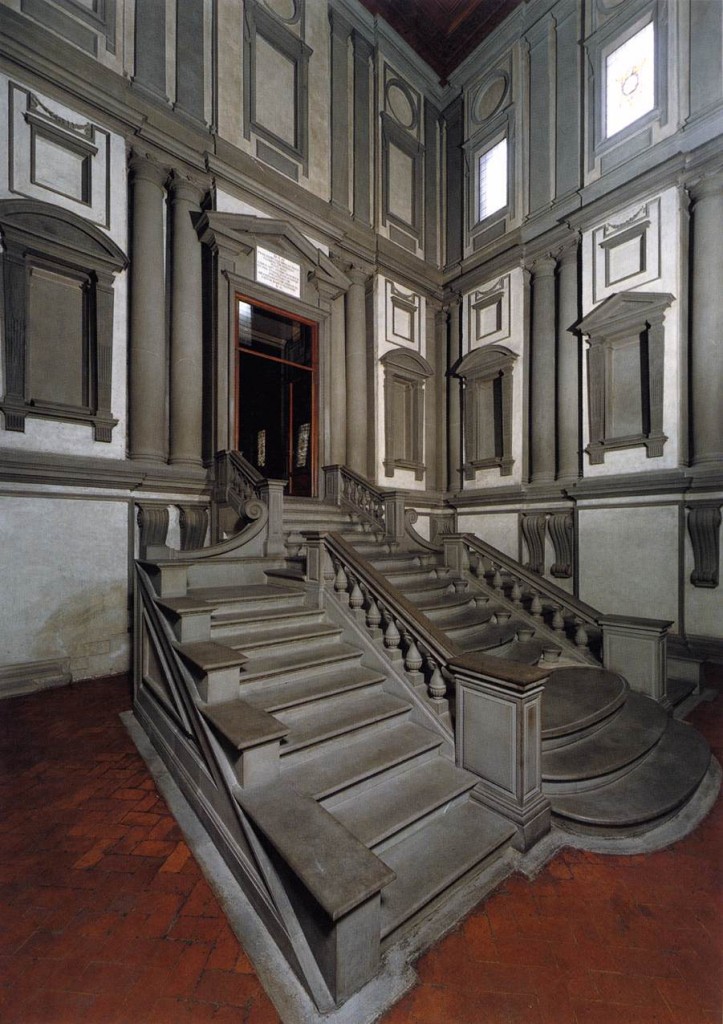
Michelangelo, Vestibule, Laurentian Library, Florence
…such as Giorgio Vasari, who designed the Uffizi for Cosimo I de’ Medici.
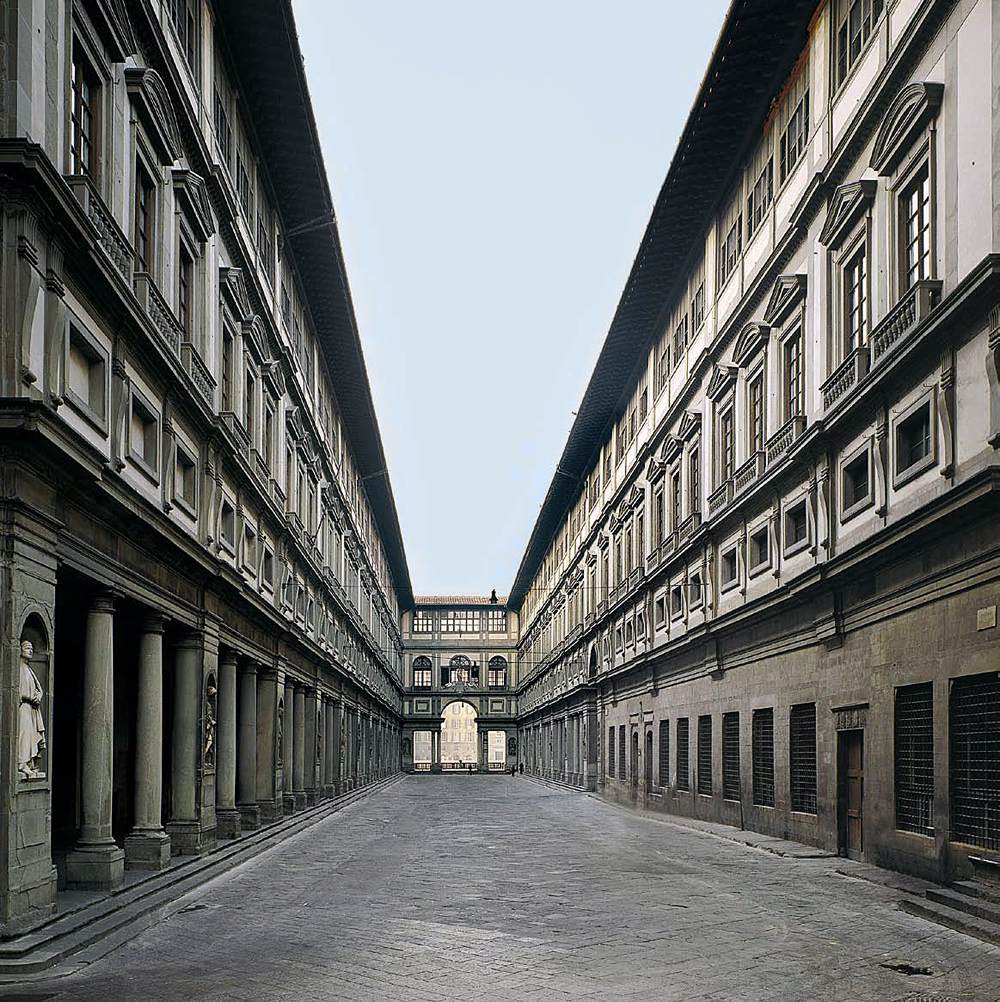
The Uffizi, which meant “offices,” was originally the site of the grand ducal bureaucracy and state archives.
